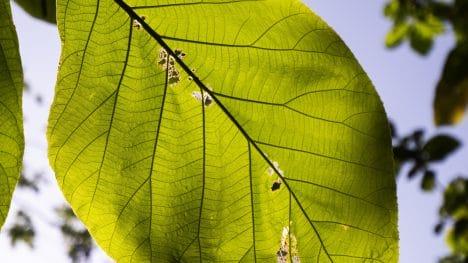Latest canopy
CI‑110 Plant Canopy Imager vs Drone‑Based LAI Measurements: Which gives you more for your money?
A plant canopy imager has become a core tool for crop scientists who want quick, reliable leaf area index (LAI) measurements in the field. Many research teams now debate whether handheld canopy instruments or drone-based LAI models offer better value. Both approaches collect important canopy structure data, but they differ in cost, accuracy, workflow, and… Continue reading…

Additional reading
Why is Riparian Canopy Cover important for Water Quality and Wildlife
Riparian zones are the transitional areas between water bodies and uplands. Riparian zones provide several ecosystem benefits, such as bank stabilization, water quality and temperature maintenance, lowered downstream flood risks, and wildlife habitat and food. Many of the riparian zone benefits depend on a healthy old-growth canopy cover. Canopy cover and shade of riparian zones… Continue reading…
Adapted Plant Traits in Riparian Zones
Riparian plants have anatomical and morphological adaptations that help them persist in the dynamic and variable conditions of the ecotone. Plant adaptations in the riparian ecotones occur in response to periodic flooding, anoxia, low luminosity, and unstable substrate. The adaptations can be in the shoot, leaves, and root systems. Adaptations vary based on life forms,… Continue reading…
How Leaf Area Index Affects Yield
Leaf Area Index (LAI) varies with species, cultivars, growing conditions, and crop stages. The influence of LAI on yield will depend on the harvested portion of crops. An increase in LAI above a specific optimum value for fruits and seed crops will decrease yield. Leaf Area Index (LAI) is a standard vegetative trait correlated with… Continue reading…
How Does the Role of Senescence Affect Crop Productivity?
Senescence can determine and increase crop productivity. Selecting for cultivars with delayed senescence improves yield only in some species. Senescence increases plant phenotypic plasticity, helping it to adapt to abiotic stress. Senescence is a significant agricultural trait that affects crop growth, stress adaptation, yield, and postharvest storage. Plants are unusual as they can time senescence… Continue reading…
How Effective is Plant Cover for Soil Erosion Control?
Plant cover is the most cost-effective and efficient way to control soil erosion in large areas affected by deforestation, mining, etc. Soil erosion measures can also be incorporated in farmlands to prevent topsoil loss. Plant canopy parameters like extent, height, and architecture will determine the efficiency of soil erosion control. Soil erosion is a major… Continue reading…
What is Senescence in Trees and Why Is It Important?
Senescence occurs at the cell, tissue, organs, and individual levels. Organ senescence is consequential in trees as it helps “recycle materials” within an individual tree to maintain function and productivity. Organ and whole tree senescence are also crucial for nutrient cycling, wildlife diversity, and forest productivity. Senescence is an integral part of all living organisms,… Continue reading…











